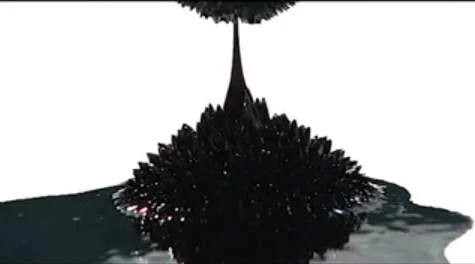Researchers have demonstrated how to produce electronic inks for the development of new applications using the ‘wonder material’, carbon nanotubes. Carbon nanotubes are lightweight, strong and conduct electricity, which make them ideal components in new electronics devices, such as tablet computers and touchscreen phones, but cannot be used without being separated out from their natural tangled state.
In the video above, Dr Stephen Hodge and Professor Milo Shaffer, both from Imperial’s Department of Chemistry, talk about the challenges of unravelling and applying carbon nanotubes in the laboratory and how the method is being scaled up to meet the requirements of industrial-scale manufacturing.

Carbon nanotubes are hollow, spaghetti-like strands made from the same material as graphene; only one nanometre thick but with theoretically unlimited length. This ‘wonder material’ shares many of graphene’s properties, and has attracted much public and private investment into making it into useful technology.
By giving the nanotubes an electrical charge, they were able to pull apart individual strands. Using this method, nanotubes can be sorted or refined, then deposited in a uniform layer onto the surface of any object.
Working with an industrial partner, Linde Electronics, they have produced an electrically-conductive carbon nanotube ink, which coats carbon nanotubes onto ultra-thin sheets of transparent film that are used to manufacture flat-screen televisions and computer screens.
This was developed by Professor Shaffer and colleagues from the London Centre for Nanotechnology, which includes fellow Imperial scientist Dr Siân Fogden, as well as Dr Chris Howard and Professor Neal Skipper from UCL.






